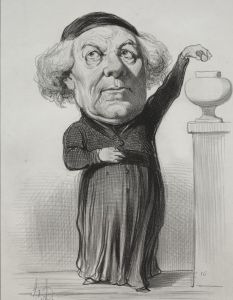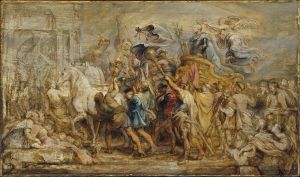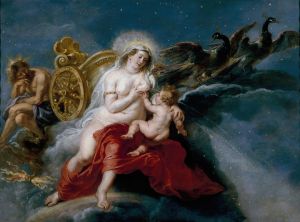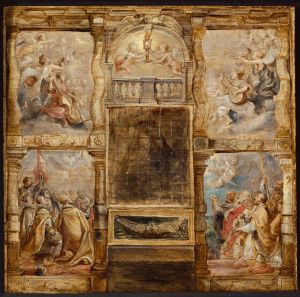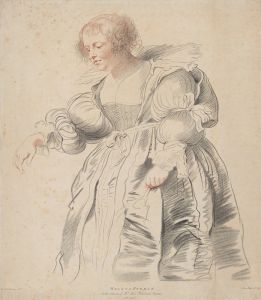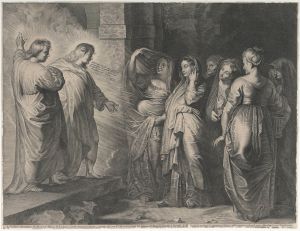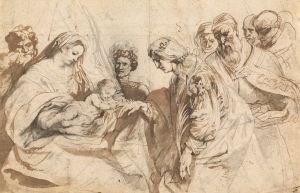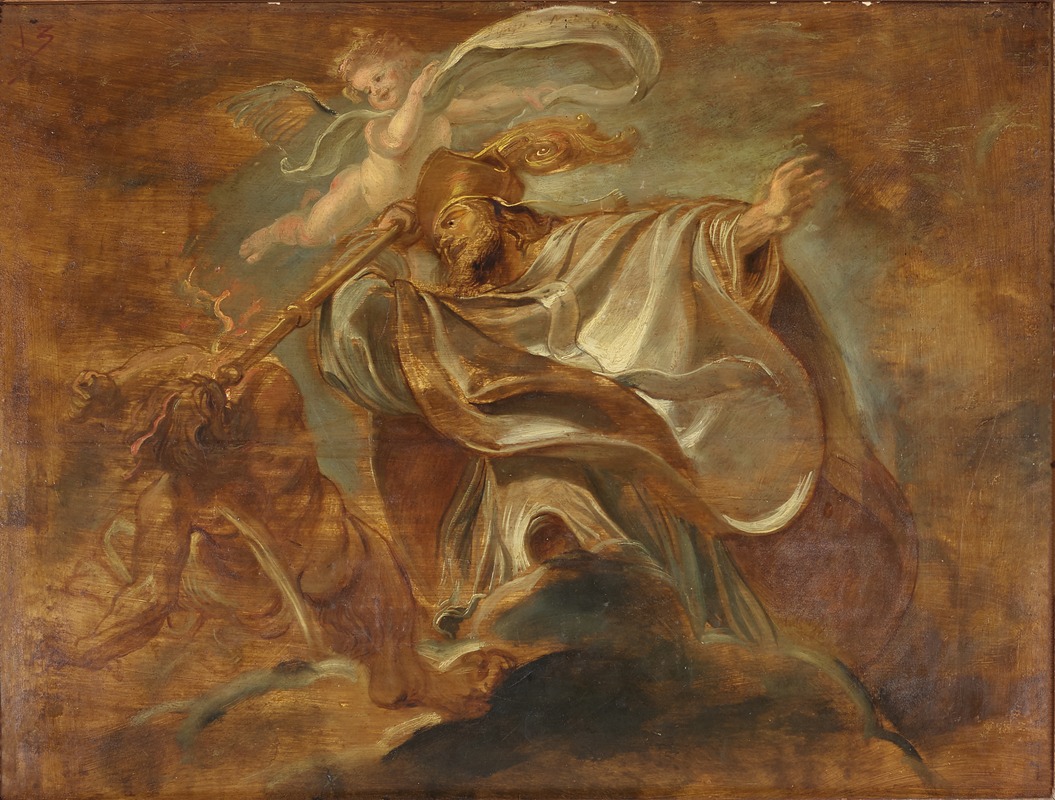
St. Gregory of Nazianzus
A hand-painted replica of Peter Paul Rubens’s masterpiece St. Gregory of Nazianzus, meticulously crafted by professional artists to capture the true essence of the original. Each piece is created with museum-quality canvas and rare mineral pigments, carefully painted by experienced artists with delicate brushstrokes and rich, layered colors to perfectly recreate the texture of the original artwork. Unlike machine-printed reproductions, this hand-painted version brings the painting to life, infused with the artist’s emotions and skill in every stroke. Whether for personal collection or home decoration, it instantly elevates the artistic atmosphere of any space.
Peter Paul Rubens, a prominent Flemish Baroque painter, is renowned for his dynamic compositions, vibrant color palette, and grandiose style. Among his extensive oeuvre, Rubens created a painting titled "St. Gregory of Nazianzus," which reflects his mastery in religious and historical subjects. This work is part of Rubens' broader exploration of religious themes, a common subject in his artistic repertoire, which often depicted saints, biblical narratives, and mythological figures.
St. Gregory of Nazianzus, also known as Gregory the Theologian, was a 4th-century Archbishop of Constantinople and is recognized as one of the Cappadocian Fathers, alongside Basil the Great and Gregory of Nyssa. He is celebrated for his significant contributions to the development of Christian theology, particularly in the formulation of the doctrine of the Trinity. Rubens' depiction of St. Gregory of Nazianzus would likely have been influenced by the saint's theological importance and his role in the early Christian church.
Rubens' painting style is characterized by its dramatic intensity and movement, achieved through the use of bold colors, dynamic compositions, and expressive figures. In his religious paintings, Rubens often sought to convey the spiritual fervor and divine inspiration of his subjects. Although specific details about the composition and visual elements of "St. Gregory of Nazianzus" by Rubens are limited, it is reasonable to infer that the painting would embody these stylistic traits, capturing the saint's piety and intellectual vigor.
Rubens' works were deeply influenced by his travels and studies in Italy, where he was exposed to the works of Renaissance masters such as Michelangelo, Raphael, and Caravaggio. This influence is evident in his sophisticated use of chiaroscuro and his ability to convey complex theological concepts through visual art. His paintings often served as altarpieces or were commissioned by religious institutions, reflecting the Counter-Reformation's emphasis on art as a means of inspiring faith and devotion.
The historical context of Rubens' career also played a significant role in shaping his artistic output. Living during a time of religious conflict and political upheaval in Europe, Rubens' art often served as a tool for conveying religious and political messages. His ability to navigate these complex dynamics made him a sought-after artist by both religious and secular patrons.
While specific information about the provenance or current location of "St. Gregory of Nazianzus" by Rubens is not readily available, his works are housed in major museums and collections worldwide, including the Louvre, the Prado, and the Hermitage. Rubens' legacy as a master of the Baroque era continues to be celebrated, and his religious paintings remain a testament to his skill in blending artistic beauty with theological depth.
In summary, "St. Gregory of Nazianzus" by Peter Paul Rubens exemplifies the artist's ability to capture the essence of religious figures through his dynamic and expressive style. Although detailed information about this specific painting is limited, Rubens' broader body of work provides insight into his approach to religious art and his enduring impact on the history of Western painting.






